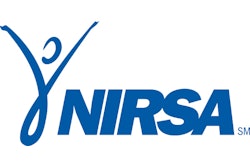Communities pair with nonprofits to run recreation centers.

In Farmington, N.M., a city-owned youth services center is run by the local Boys and Girls Club, while in Florida's Hillsborough County, community members hope to build a county-owned but YMCA-managed community center. In Calgary, Alberta, a complex under construction will include a city-financed YMCA, along with two ice arenas, a gymnasium, a public library and a Catholic high school.
These are part of a growing wave of communities who, hamstrung by tight budgets or scant resources, have turned toward privatization-partnering with nonprofit organizations to run recreation and community centers.
One particularly successful partnership, pairing the city of Sherwood, Ore., and the local YMCA, has been in operation for two years. In the beginning, the city did not have either a parks or a recreation department. Sherwood had grown from 3,000 residents to more than 10,000 in just three years, however, and officials recognized the need to address leisure services. When the city manager approached the YMCA to build a facility, the Y felt there was not enough demand to support a capital campaign drive.
Undaunted, the community voted to increase taxes to support a 20-year bond to build the facility. Today, both partners-including the year-old park and recreation department-couldn't be happier.
"It really allows us to focus on a smaller number of programs and special events, and really do them well," says Reed Rainey, director of parks. Not to mention that partnering frees up resources to take on other challenges.
The fledgling department has been able to supplement traditional duties with special events and festivals, and manages an old theater used to show live performances and films. It is also a partner in protecting the Tualatin River National Wildlife Refuge.
Plus, the city works closely with the local school district and the police activities league (PAL) to provide additional recreational services for the community-from youth sport programs managed by the school district to activities for at-risk youth offered by PAL. In turn, the parks department develops and maintains athletic fields on school district land.
"We all work together to make sure we're offering a comprehensive program to the community," Rainey says. "We look at the needs we have in the city, and then we look at what the Y is offering. Between the other three partners-the city, the school district and PAL-we pick up the slack."
The partnerships not only ease stress on resources, but they allow for greater community interaction and renewed community interest in recreational programming.
In fact, the partnerships have been so positive that Rainey says he'd consider pairing with private clubs expected to move into the community soon, or an existing recreation club that focuses on basketball and volleyball.
"We've seen our collaboration with the Y be successful, and we've seen all the positives that have come from that," he says. "We would be open to evaluating any partnership opportunities, including a private fitness club or chain that wanted to work with us. If we can keep everybody on the same page and focused on the same goals, that's a positive."
John Noland, former executive director of Sherwood YMCA and current executive director of Clark County YMCA, agrees. Throughout the process, he has felt that the YMCA is more a part of the recreation department than a separate entity. While the Y charges a membership fee, like Ys everywhere it is open to any community member, and a financial assistance program subsidizes families who cannot afford the regular fee. The city also benefits from any improvements made to the facility, including an $80,000 waterslide funded by the YMCA after construction. Benefits for both partners are endless, according to Noland.
"Whether it's child care, day camp, youth sports, health and fitness, or community outreach, the Y provides it for the city," he says. "We've been doing this for 150 years in the United States. We know how to do the programs. Our stumbling block is usually the facility. If we have access to a facility, we can run superior programs."
It is a perfect collaboration, they say. It might also be ideal for cities whose facilities are overcrowded, who need to expand but can't manage another facility. Or it may be the answer for a community looking to fill a niche in its recreational programming. Whatever the case may be, if a city begins thinking about forming a partnership, it is vital to be sure everyone knows and understands the details of the plan.
"Everything should be spelled out in detail in advance, so you don't have any surprises," Rainey says. From informing the community to discussing ideas within the city government, communication is key. In Las Vegas, construction was already well under way on two leisure service centers when the city council proposed allowing a nonprofit organization to manage one. At that point, the city's department of leisure services was already looking forward to managing two new centers (the newest existing center was built in 1979).
"Morale in general is low just because it hit us so late in the process, after we had put everything together," says John Chambers, who will monitor the YMCA project as manager of adaptive recreation for Las Vegas. gWe spent 21.2 years designing, thinking we were going to operate these facilities, and now we have one instead of two.
The park and recreation department had to submit a bid alongside the YMCA's the only nonprofit that applied and it wasn't chosen by the council. Now, the department is left hoping the YMCA will be able to provide programming similar to what it had planned. The City Employees Association, concerned that the contract with the YMCA threatens union jobs, has filed a complaint with the Local Government Employee-Management Relations Board. Yet all sides hope the situation will work out for the best.
gAll we're doing is looking at ways that we can be more efficient with how we spend taxpayer dollars, says Larry Brown, the city council member who represents the ward in which the facility is being built. gWe want to be able to compare and contrast how the nonprofit sector provides leisure programming versus how the city has traditionally done it. We feel strongly that we can actually strengthen the way we currently do business by seeing what the Y does well and incorporating that into what the city does well.
Indeed, two years down the road, Las Vegas may find itself in a position like that enjoyed by Sherwood not only improving city services and efficiency by learning from the Y, but exploring and expanding far beyond what resources may have allowed before the collaboration.




































